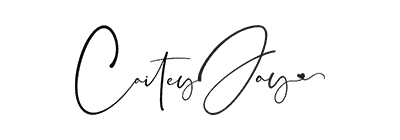
In the world of self-care and wellness, there are many different approaches to mindfulness. Two popular methods are meditation and breathwork. Both practices can be beneficial in reducing stress and promoting relaxation. Here’s what you need to know about the differences between meditation vs breathwork.
Jump to:
What is breathwork?
Breathwork is a type of mindfulness practice that is used for physical and emotional healing. The basic idea is to focus on your breath and use it as a tool to calm your nervous system and, ultimately, create a feeling of wellbeing.
There are many different types of breathwork practices, each with a different aim. But, one thing all types have in common is slowing down your breath and paying attention to each inhale and exhale.
Breathwork can be done on your own or with a group. It can be done with music or in silence. It can involve props, like pillows and blankets. To figure out what style you enjoy most, I recommend taking a class with a practitioner to start.
The key is to find a practice that you enjoy and that you can commit to doing on a regular basis. That's when you'll really start reaping the benefits of breathwork.
What are the benefits of breathwork?
Our breath is linked to every single function in our body. So, naturally, breathwork has many potential physical and mental health benefits. Some of these include:
- Stress reduction: it reduces stress and anxiety by inducing a state of relaxation and calmness.
- Improved physical health: it improves respiratory function, circulation, and oxygenation. It may also help to lower blood pressure and improve digestion.
- Emotional healing: it can act as a release and help us process difficult emotions, such as grief, anger, or fear. It may also bring unconscious emotions to the surface.
- Increased self-awareness: it brings awareness to the present moment, which can lead to a greater understanding of our own thoughts, feelings, and behaviours.
- Spiritual growth: some people find that breathwork can facilitate spiritual growth and a sense of connection with a higher power.
Note: Breathwork is generally considered to be a safe and effective way to improve physical and mental well-being, although some people may experience temporary discomfort or emotional release during a breathwork session.That's why I recommend working with a trained and experienced breathwork facilitator to start.
Types of breathwork

Breathwork is an umbrella term for any type of therapeutic breathing. There are many different types of breathwork, each with its own unique benefits. There are also many different breathwork techniques that are used within the various practices.
Some common organized breathwork practices include:
- Holotropic breathwork: This type of breathwork was developed by psychiatrist Stanislav Grof and involves rapid and deep breathing, often in combination with music, in order to induce a non-ordinary state of consciousness. It is often used for personal growth and healing.
- Rebirthing breathwork: This type of breathwork involves continuous, circular breathing in order to release old traumas and emotions and achieve a sense of renewal and rebirth.
- Pranayama: This is a type of breathwork that comes from the yoga tradition and involves a variety of controlled breathing techniques in order to improve physical and mental well-being.
- Transformational breathwork: This type of breathwork combines conscious, connected breathing with gentle body mapping, movement, vocal sounds and affirmations to facilitate physical, emotional, and spiritual transformation.
Some common breathwork techniques, that you can do in an organized class or on your own, include:
What is meditation?

Meditation is a practice that has been around for centuries. It involves sitting quietly and focusing your mind on a particular object, thought or activity to train awareness. The goal of meditation is to bring clarity to your mind and become more present in the moment.
There are many different types of meditation, but they all share the common goal of helping you to find inner peace. Meditation can be practiced anywhere, at any time. All you need is a quiet place to sit or lie down. You can meditate for as long as you like, but even a few minutes can be beneficial.
What are the benefits of meditation?
For many people, the benefits of meditation are life-changing. With regular practice, meditation can help to create a sense of calm and well-being that extends far beyond the time spent in the practice. Here are some specific benefits:
- Reducing stress: helps reduce stress and anxiety by calming the mind and allowing you to focus on the present moment.
- Improving mental clarity: improves focus and concentration, which can lead to better decision making and problem solving skills.
- Promoting emotional well-being: may improve your emotional well-being by increasing positive emotions and reducing negative ones.
- Enhancing self-awareness: helps you become more aware of your thoughts, emotions, and behaviors.
- Improving physical health: research suggests that it may have a number of physical health benefits, including lowering blood pressure, reducing pain and improving sleep quality.
Types of meditation
There are many different types of meditation, and which one is right for you truly depends on personal preferences. Some popular types of meditation include:
- Mindfulness meditation: This involves focusing on your breath, a mantra, or a specific object and bringing your attention back to the present moment whenever it wanders.
- Loving-kindness meditation: This involves directing feelings of love and compassion towards oneself and others.
- Transcendental meditation: This involves the use of a mantra to help the mind settle into a state of restful awareness.
- Zen meditation: This involves sitting in a specific posture and focusing on the breath in a way that allows the mind to become more present and aware.
- Vipassana meditation: This involves a deep investigation of the connection between mind and body, with a focus on the present moment and the impermanent nature of all things.
- Chakra meditation: This involves focusing on and balancing the energy centers in the body known as chakras.
There are many other types of meditation as well, including guided meditation (through apps like Headspace), movement meditation, and visualization meditation. Just do a quick Google search and you'll find endless options!
What do you need to get started with meditation?
The good news is that you don't need much.
You'll need a comfortable place to sit or lie down, where you'll be able to relax your body and avoid distractions in your environment. While it's not necessary, you can further set the peaceful mood by lighting a candle or incense.
The truth is, there is no wrong way to meditate, so do whatever makes you feel most comfortable. The most important thing is to focus on your breath and clear your mind of all other thoughts.
But, if you want to create a dedicated space, then check out my post below:
My experience with meditation and breathwork

Like most of you, I consistently try to build mental space into my busy mind. Over the years, I've tried many types of meditation and attended several breathwork sessions.
Here's what I've learned about meditation vs breathwork:
- Meditation doesn't comes easily. It's important to be patient with yourself and not get discouraged when you have a hard time quieting your mind or staying focused.
- It was extremely helpful to try different types of meditation to see what practice felt most natural for me. As much as I love the idea of guided meditation through apps like Headspace, I found they took away from my peace and distracted me. After trial and error, I learned that mindfulness meditation with a focus on the breath worked best for me. Even better when I have incense going.
- I need to schedule it or it doesn't happen. Much like healthy eating or exercise, mindfulness has to be a regimented practice. I've learned to set aside a dedicated time and place for my meditation practice.
- Breathwork sessions are very therapeutic. I was surprised at the emotional release an hour of deep breathing has the power to do. Even crazier is that I feel the benefits for several days. I try my best to attend a guided session once a quarter to tap into that therapeutic benefit.
- Breathing techniques are a great everyday tool. While guided sessions require a little more time and planning, breathing techniques can be extremely beneficial in managing my stress response. It's good to get a few in your toolbox to calm you during times of heightened emotions.
- Im always happy I did it. Again, much like healthy eating and exercise, the effort is worth the reward. When I'm in a period of practicing mindfulness regularly, I feel like a calmer, happier version of myself.
Similar articles
Fast facts
- Breathwork is a type of mindfulness practice that can be used for physical and emotional healing. The basic idea is to focus on your breath and use it as a tool to calm your nervous system and create a feeling of wellbeing.
- Meditation is a practice that has been around for centuries. It involves sitting quietly and focusing your mind on a particular object, thought or activity to train awareness. The goal of meditation is to bring clarity to your mind and become more present in the moment.
- Both practices can be beneficial in reducing stress and promoting relaxation.
- It's helpful to experiment with different styles, as both meditation and breathwork have a variety of approaches and techniques. Find one that works for you.
Have you tried meditation or breathwork? Let me know which you prefer in the comments below.







Leave a comment!